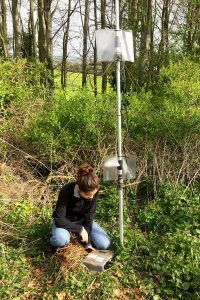
There were a lot of structural similarities between the different agri-environmental scheme (AES) habitats, so the relationships between bats and AES habitats were not investigated. Instead, species-specific management practices were identified. The importance of AES vegetation characteristics varied between bat species.
Six species and two further genera of bats (Pipistrellus pipistrellus, Pipistrellus nathusii, Pipistrelle pygmaeus, Nyctalus noctula, Barbastelle barbatellus, Eptesicus serotinus, Myotis species, Plecotus species) bats were recorded over the project, with the most abundant species recorded being the Pipistrelle bat (P. pipistrellus), which accounted for 71.4%.
Dicot cover positively influenced the occurrence of Pipistrelles and the Common Noctule (N. noctula) bat. Increased plant diversity positively influenced activity patterns of the Soprano Pipistrelle (P. pygmaeus) and the Barbastelle bat (B. barbatellus). The Barbastelle bats showed a further positive relationship with flowering plant abundance.
Areas with higher flowering plant abundance are likely to have higher invertebrate diversity which could simply show that bats are attracted to these areas for the high invertebrate resources. However, these habitats are specifically sown with flowers that are attractive to pollinators.
Some bat species activity was positively associated with the hedge height and/or the number of trees present alongside the AES habitats. This could be because hedges have been found to support increased Diptera abundance, and the shelter from hedgerows and trees may help smaller bat species to conserve energy.
Soprano pipistrelles activity was higher along field boundaries closer to woodland. Similarly,
Barbastelle bats were more abundant near woodland and Common noctules were more likely to be near buildings, meaning that the proximity of AES habitats to potential roost sites should be considered if AESs are to be employed as a foraging habitat for bats in the future.
For further reading please follow the links below:
